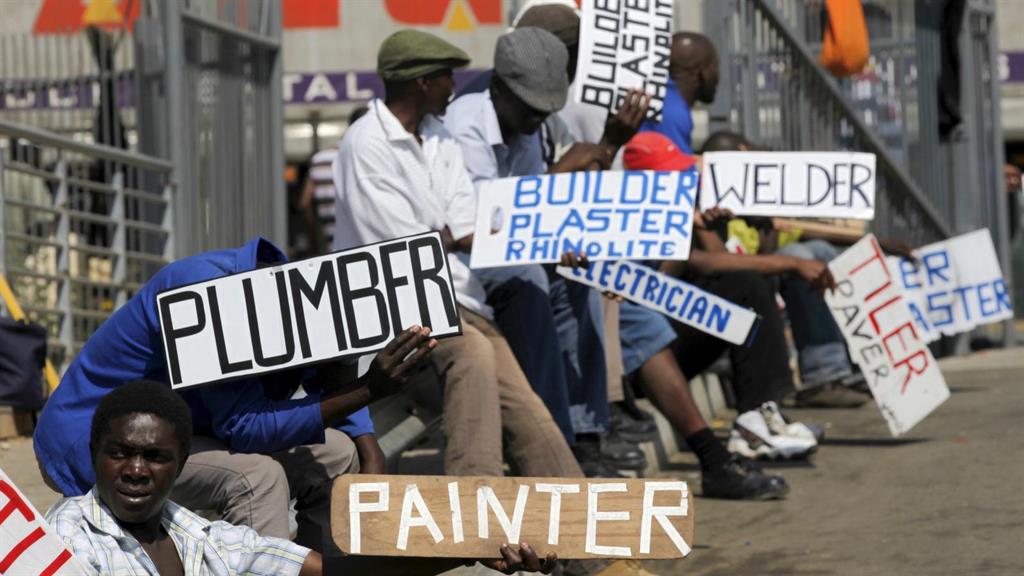Nam haemorrhaging jobs
One in every 20 unemployed registered on government’s employment portal the past quarter had a university degree.
Jo-Maré Duddy – The impact of Covid-19 and the ongoing recession claimed 5 748 jobs in the three months to the end of June.
This is more than the 4 560 job losses recorded in the entire 2018/19, official numbers show.
No official figure for 2019/20 is available on the website of the ministry of labour, industrial relations and employment creation. The new labour minister, Utoni Nujoma, also did not give an indication of job losses in 2019/20 in his budget motivation for 2020/21 in June.
In the quarterly report for April to June, released on Monday, the executive director of the ministry, Bro-Mathew Shinguadja, said Namibia witnessed a “massive collective termination of employment (retrenchment)” in the three months under review.
About 49.4% of all jobs losses were recorded in Khomas, while nearly 23% of total retrenchments took place in Erongo. This translates to 2 838 jobs in Khomas and 1 309 in Erongo.
No notification of retrenchments was received for Kavango West. In the other regions, retrenchment numbers were: //Kharas (991), Otjozondjupa (165), Oshikoto (132), Kunene (86), Hardap (76), Kavango East (75), Oshana (50), Zambezi (12), Ohangwena (6), Omusati (5) and Omaheke (3).
In total, 388 employers laid workers off in the past quarter.
Covid or recession?
Only about 32% of all retrenchments, however, was as a result of the impact of the lockdown and Covid-19 on business.
According to Shinguadja, 1 816 people at 111 employers lost their jobs due to Covid-19 related reasons. The rest – 3 932 workers at 277 employers – were retrenched for “other reasons”.
The Namibia Statistics Agency (NSA) last conducted a labour force survey in 2018, pegging the country’s official unemployment rate at 33.4%. That meant more than 364 000 people were without jobs in 2018, 48.5% of them youth.
In an analysis late in March this year, the Economic Association of Namibia (EAN) and Cirrus Capital warned that the country’s unemployment rate could exceed 70% if “business interruptions continue for an extended period of time without any fiscal support”.
Looking for work
According to the report, a total of 2 035 jobseekers were registered on the Namibia Integrated Employment Information System (NIEIS) in the past quarter – 1 651 unemployed and 384 employed jobseekers.
Of this, the ministry could only place 33 or 1.6%.
The Employment Services Act of 2011 requires all employers in Namibia with 25 or more employees to report vacancies or new positions to the Employment Service Bureau (ESB) at the ministry, which then distributes the information. The law was implemented in 2015.
Of the total number of registrations, 821 were male and 1 214 female.
Nearly two-thirds 1 330 of registered jobseekers on the NIEIS were in the age bracket of 25 to 39 years: 572 (25-29), 453 (30-34) and 305 (35 to 39).
Nearly 29% or 586 of the registered unemployed had attained senior secondary education, followed by 411 or 20% of jobseekers with junior secondary education.
About 16% (331) had certificates or diplomas. About one in 20 registered on the NIEIS (112) had university degrees.
According to the report, 101 had a primary education, while 33 had no formal education. Only 16 of the jobseekers registered the past quarter had postgraduate degrees.
Khomas region registered the majority of jobseekers (877) followed by //Kharas (361). The regions with the lowest number of jobseekers registered were Kunene (16), Otjozondjupa (28) and Oshikoto (36).
"In order to mitigate high unemployment rate, the ministry has started the process of reviewing the National Employment Policy, which is anticipated to yield positive outcomes," Shinguadja said.
This is more than the 4 560 job losses recorded in the entire 2018/19, official numbers show.
No official figure for 2019/20 is available on the website of the ministry of labour, industrial relations and employment creation. The new labour minister, Utoni Nujoma, also did not give an indication of job losses in 2019/20 in his budget motivation for 2020/21 in June.
In the quarterly report for April to June, released on Monday, the executive director of the ministry, Bro-Mathew Shinguadja, said Namibia witnessed a “massive collective termination of employment (retrenchment)” in the three months under review.
About 49.4% of all jobs losses were recorded in Khomas, while nearly 23% of total retrenchments took place in Erongo. This translates to 2 838 jobs in Khomas and 1 309 in Erongo.
No notification of retrenchments was received for Kavango West. In the other regions, retrenchment numbers were: //Kharas (991), Otjozondjupa (165), Oshikoto (132), Kunene (86), Hardap (76), Kavango East (75), Oshana (50), Zambezi (12), Ohangwena (6), Omusati (5) and Omaheke (3).
In total, 388 employers laid workers off in the past quarter.
Covid or recession?
Only about 32% of all retrenchments, however, was as a result of the impact of the lockdown and Covid-19 on business.
According to Shinguadja, 1 816 people at 111 employers lost their jobs due to Covid-19 related reasons. The rest – 3 932 workers at 277 employers – were retrenched for “other reasons”.
The Namibia Statistics Agency (NSA) last conducted a labour force survey in 2018, pegging the country’s official unemployment rate at 33.4%. That meant more than 364 000 people were without jobs in 2018, 48.5% of them youth.
In an analysis late in March this year, the Economic Association of Namibia (EAN) and Cirrus Capital warned that the country’s unemployment rate could exceed 70% if “business interruptions continue for an extended period of time without any fiscal support”.
Looking for work
According to the report, a total of 2 035 jobseekers were registered on the Namibia Integrated Employment Information System (NIEIS) in the past quarter – 1 651 unemployed and 384 employed jobseekers.
Of this, the ministry could only place 33 or 1.6%.
The Employment Services Act of 2011 requires all employers in Namibia with 25 or more employees to report vacancies or new positions to the Employment Service Bureau (ESB) at the ministry, which then distributes the information. The law was implemented in 2015.
Of the total number of registrations, 821 were male and 1 214 female.
Nearly two-thirds 1 330 of registered jobseekers on the NIEIS were in the age bracket of 25 to 39 years: 572 (25-29), 453 (30-34) and 305 (35 to 39).
Nearly 29% or 586 of the registered unemployed had attained senior secondary education, followed by 411 or 20% of jobseekers with junior secondary education.
About 16% (331) had certificates or diplomas. About one in 20 registered on the NIEIS (112) had university degrees.
According to the report, 101 had a primary education, while 33 had no formal education. Only 16 of the jobseekers registered the past quarter had postgraduate degrees.
Khomas region registered the majority of jobseekers (877) followed by //Kharas (361). The regions with the lowest number of jobseekers registered were Kunene (16), Otjozondjupa (28) and Oshikoto (36).
"In order to mitigate high unemployment rate, the ministry has started the process of reviewing the National Employment Policy, which is anticipated to yield positive outcomes," Shinguadja said.





Comments
Namibian Sun
No comments have been left on this article